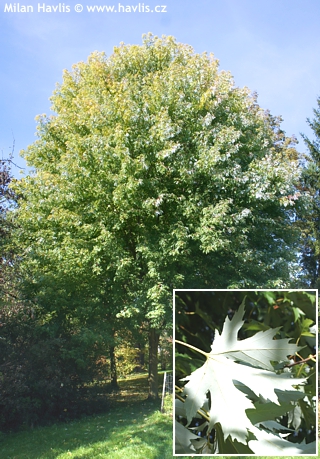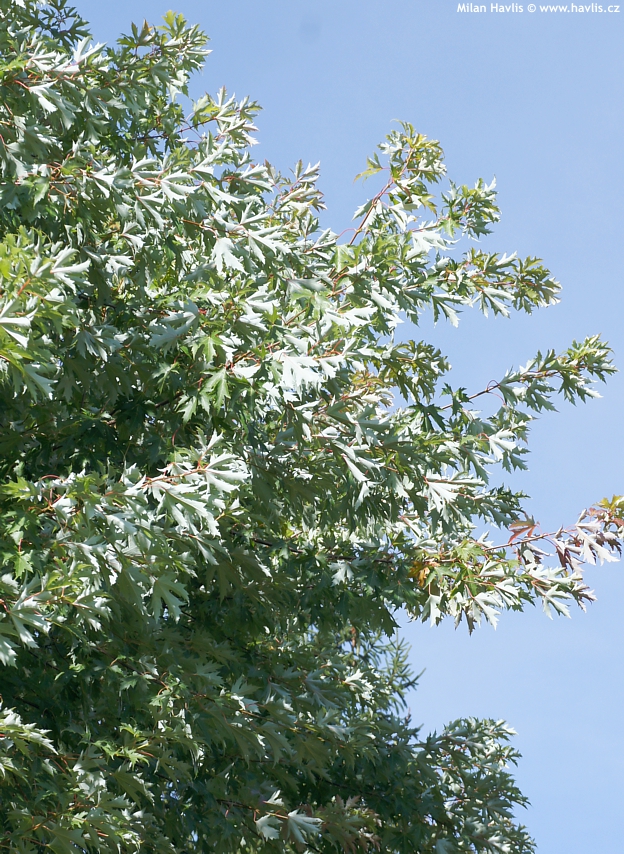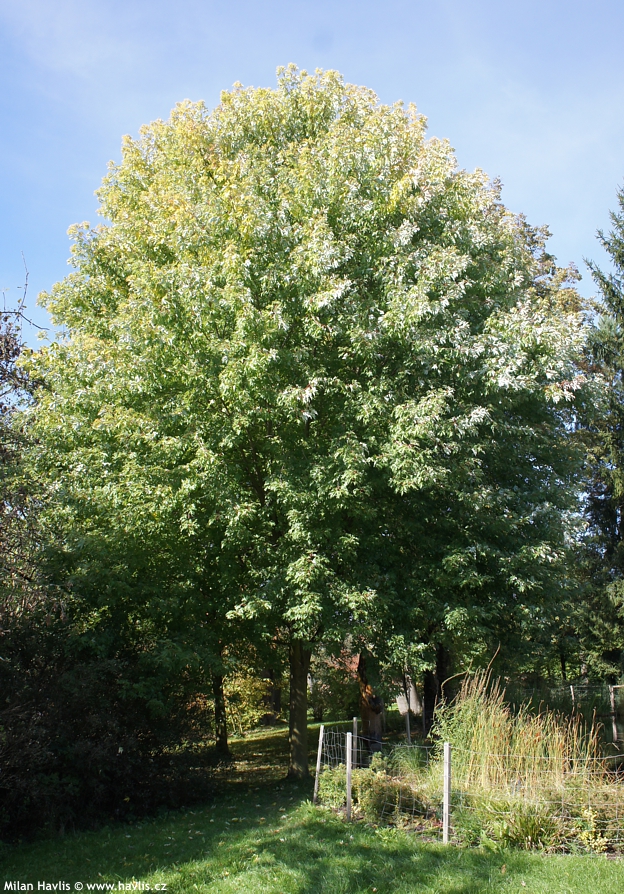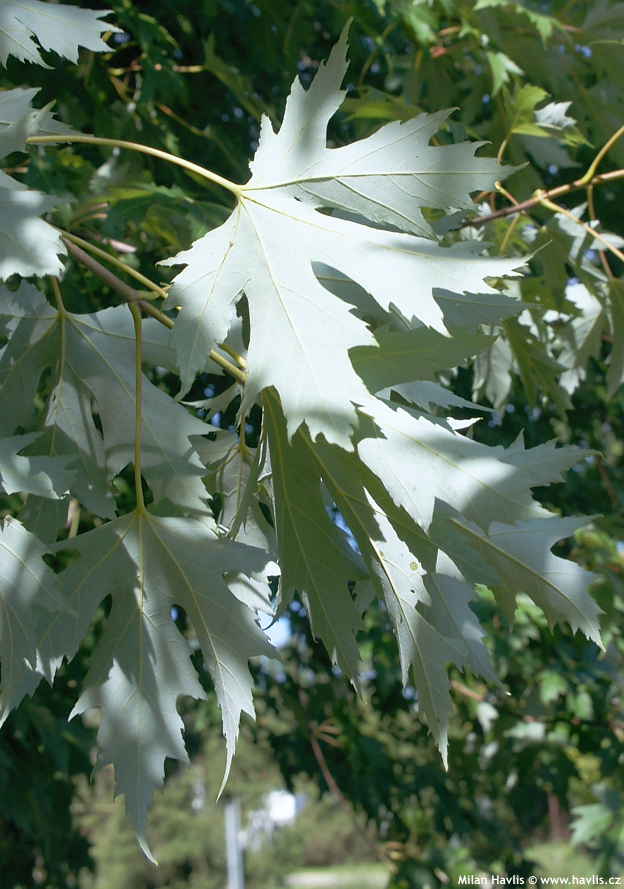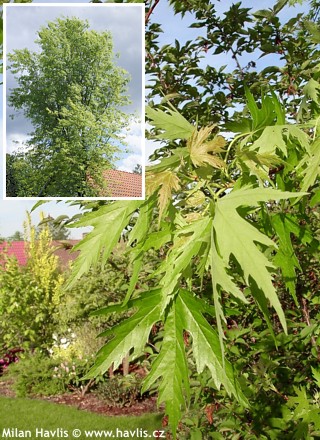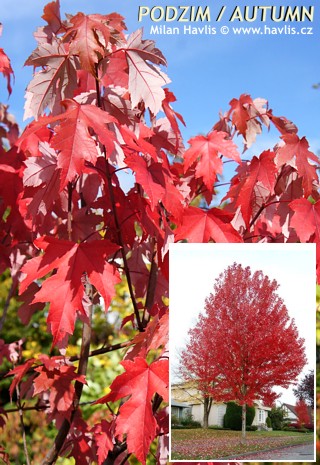Acer saccharinum silver maple
Silver maple is a tall tree from North America. It is valued for its attractive foliage and resistance to most weather whims. Its deciduous leaves are 3 to 5 lobed, deeply cut, bright green above and silvery white beneath. Wait for the wind if you want to see their silver reverse. In autumn they commonly turn rich yellow, or if grown in highly acid soil they change to orange, scarlet red to pale purple. In late winter appears a profusion of tiny, red flowers turning yellow as they mature.
The tree grown vigorously, forming a broadly oval canopy when young, spreading to almost rounded with age. In most encyclopedias you can read that its branches are fragile and may tend to break, though I have never seen a single one in 20 years. Pruning is possible from late autumn till midwinter, but you can never tame this wild thoroughbred, it will keep on reaching for the stars. Suitable for large areas and parks only.
Silver maple is popular for its durability. It can live almost anywhere and is tolerant of most soil types including wet, heavy clay, and very acid soil. On the other hand, its root system can be too aggressive near drainage and sewage pipes, as well as foundations. It is fully hardy to min. -34°C (USDA zone 4), possibly a bit more.
Last update 24-02-2020

































